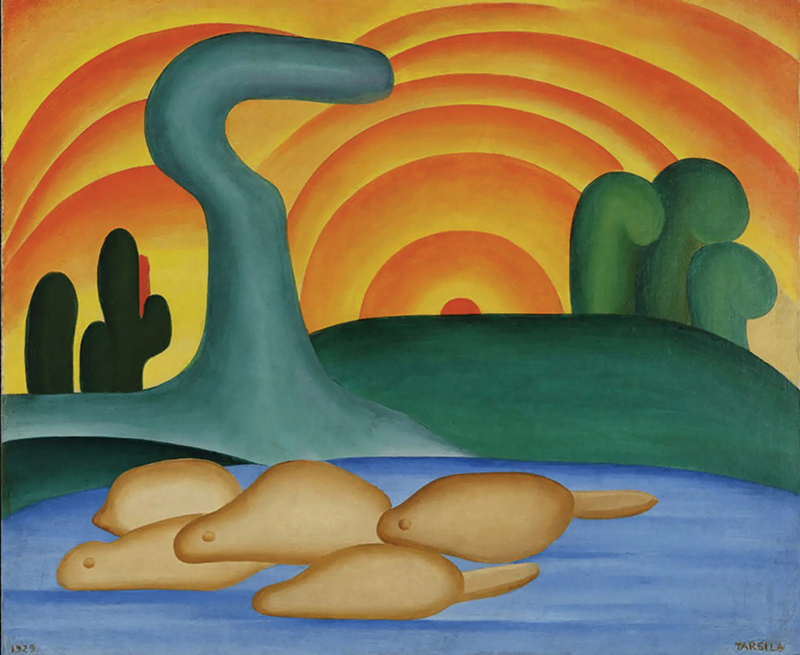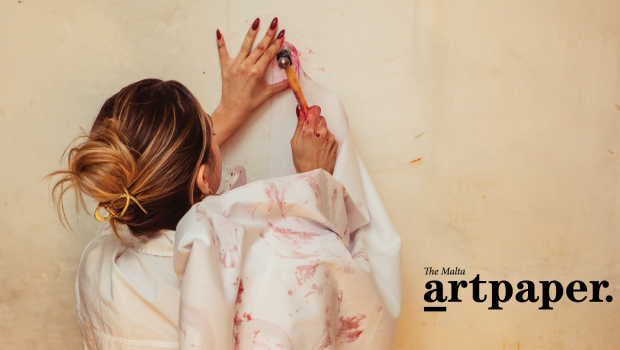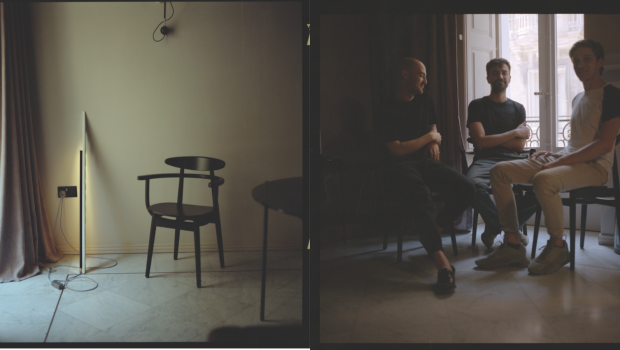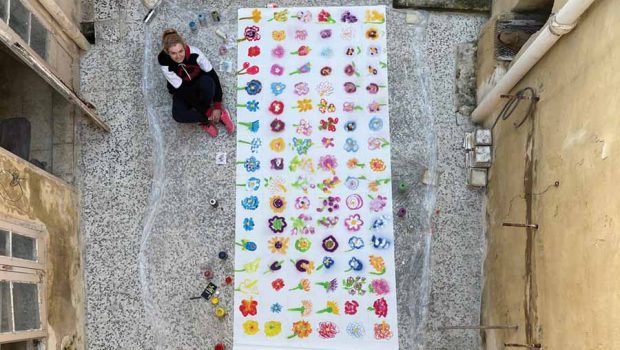DRUGS, DEATH AND STOLEN ART
The art world is a dynamic place, far removed from quiet spectators rubbing their chins at sparkling galleries.
In August, two major artworks were rightfully retrieved by authorities across the world, while a feminist Polish pioneer has sadly passed away.
A Brazilian artwork worth a staggering $59.1 million was discovered under the bed in an Ipanema beach house, after a sweeping police investigation into a group of stolen works.
The major work is called Sol Poente (Setting Sun) by Tarsila do Amaral, one of Brazil’s most prominent and important modern artists. It is one of 16 paintings found on the 11th of August, which are estimated to be worth 709 million reias ($139 million), not counting stolen jewelry or cash found.

The mastermind behind this art heist, according to police, was the daughter of an 82-year-old woman, Genevieve Boghici, who was once married to Jean Boghici, a late Brazilian dealer who acquired a significant collection of art throughout his life.
Police detailed how the con woman allegedly used a clairvoyant to convince her mother that she was sick and must cough up a series of payments as a sort of “spiritual redemption” through an Afro-Brazilian priestess. Eventually Boghici became suspicious and tried to stop making payments, and was confined to her home where she was beaten and robbed.
Sol Poente (Setting Sun), completed in 1929, is a beautiful and historically-weighted work. It is a solid example of how do Amaral fused elements of European modernism with styles inspired by Brazilian vernacular art. It featured in her major 2018 Museum of Modern Art retrospective. It comes to no surprise then, that when Sol Poente was uncovered from the bed frame of a Brazilian beach house, one person caught on video was heard saying “Fucking hell!” in Portuguese.
Just a week later, a painting believed to be done by the famous artist Picasso was discovered during a high-profile drug raid in Iraq. Like the Tarsila do Amaral painting, it is estimated to be worth millions.
According to the government-run Iraqi News Agency (INA), the allegedly stolen work was found after three people were arrested on suspicion of trade and transportation of narcotic drugs in the Diyala province in central-eastern Iraq. Details about the authenticity of the painting are yet to be released.
Pablo Picasso, known for his essential contribution to the Cubist movement, is one of the world’s most known artists, producing over 13,500 paintings, 100,000 prints and engravings as well as hundreds of sculptures and ceramic works during his nearly 80-year career.

This is not the first of his work to be stolen. Last year, Picasso’s “Head of a Woman” was recovered by Greek police after nearly a decade since it was stolen during a museum heist. In 2019, his “Portrait of Dora Maar” was discovered by a Dutch art detective after 20 years since it was stolen off a yacht of a Saudi sheikh in the South of France. In May, a portrait of Picasso’s lover and mother of one of his children called “Femme nue couchée” sold at auction for $67.5 million.
While we applaud these retrieved masterpieces, August has also brought the sad news of the passing of Polish feminist artist, Natalia LL. Natalia Lach-Lachowicz, known as Natalia LL, was a conceptual artist and image maker who was active and influential in the avant-garde scene in Poland in the 1960s and 70s.

Natalia LL left a multi-faceted and rich body of work, including an erotic and satirical series that questions how women were passively portrayed in TV, print and advertising. Consumer Art (1972-1975), one of her most defining works, presents models delighting in phallus foods like bananas, sausages and ice-cream cones and serves to counter the male gaze in consumerism. Through her bold explorations of the “the second sex” , LL left a permanent mark on global feminism and is widely celebrated today. Rest in power, Natalia.








